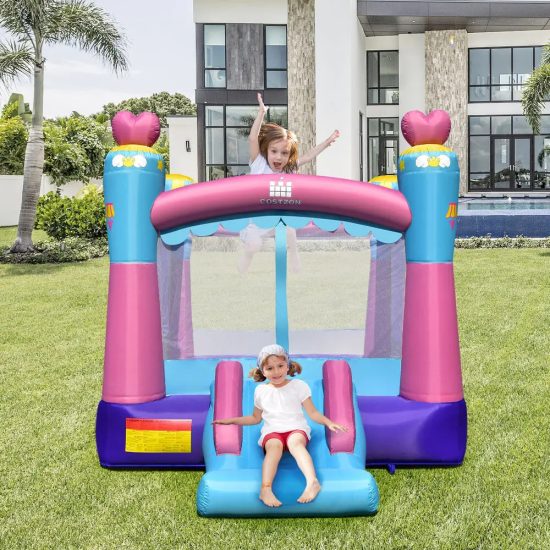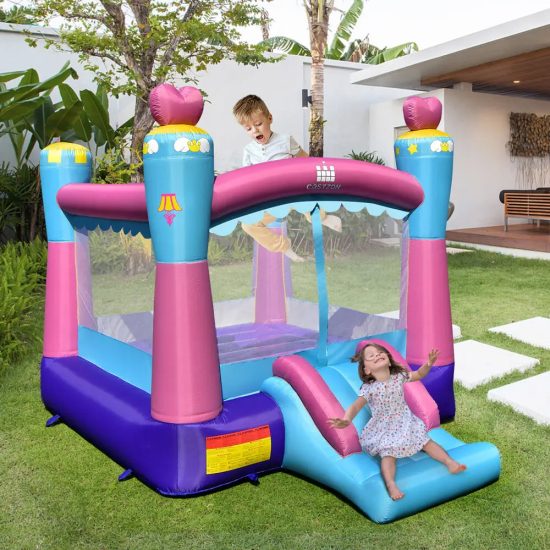The educational value of bounce houses extends far beyond mere fun and entertainment. These inflatable play structures offer a wealth of learning opportunities for children, fostering development through play-based experiences. Here’s an exploration of the educational benefits they provide:
- Physical Development: Bouncing, jumping, and navigating through bounce houses promote physical development. Children enhance their gross motor skills, coordination, balance, and spatial awareness in a dynamic and engaging environment.
- Sensory Stimulation: The tactile experience within bounce houses stimulates sensory receptors. The varying textures and movements engage sensory processing, contributing to sensory integration and development, particularly in younger children.
- Social Skills: Bounce houses facilitate social interaction and cooperation among children. Sharing the space, taking turns, and engaging in imaginative play scenarios help develop essential social skills like communication, cooperation, and conflict resolution.
- Creativity and Imagination: Within the confines of these inflatable play structures, children unleash their creativity. They invent games, create stories, and engage in role-playing activities, nurturing their imagination and creative thinking.
- Problem-Solving: Negotiating through obstacles and challenges within bounce houses encourages problem-solving skills. Children strategize and adapt to navigate barriers, fostering critical thinking and perseverance.
- Language Development: Play-based interactions in bounce houses encourage verbal communication. Children articulate their ideas, negotiate roles, and engage in storytelling, enhancing language skills and vocabulary.
- Emotional Regulation: Bouncing and playing in a fun, safe environment can help children regulate their emotions. The joy and physical activity release endorphins, reducing stress and promoting emotional well-being.
- Mathematical Concepts: Simple activities within bounce houses, like counting steps or estimating distances for jumps, introduce basic mathematical concepts in a playful manner, laying the foundation for mathematical understanding.
- Cultural Understanding: Themed bounce houses featuring diverse cultural motifs or characters expose children to different cultures, fostering an appreciation for diversity and encouraging curiosity about the world.
- Educational Reinforcement: Bounce houses can complement educational themes or curriculum topics. Incorporating educational games or challenges within the play structure reinforces learning in various subjects.
In conclusion, bounce houses offer a rich and multifaceted educational environment where children learn, explore, and develop essential skills through play. Beyond the fun-filled moments, these inflatable play structures serve as invaluable tools for holistic childhood development.


